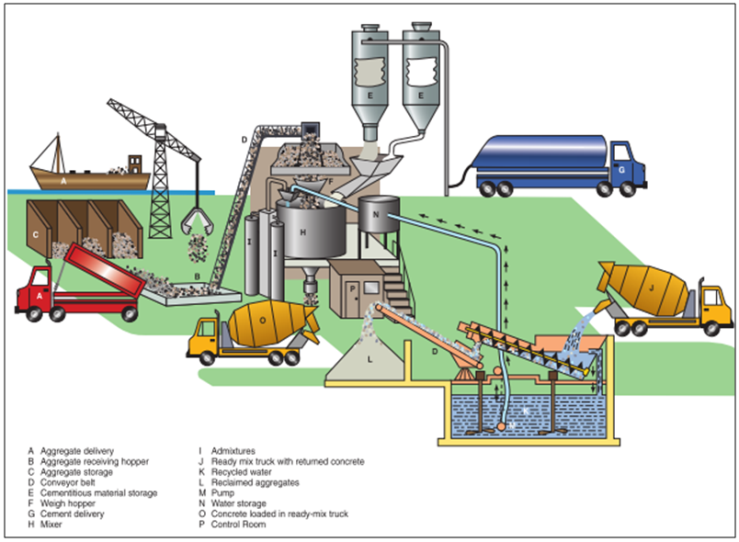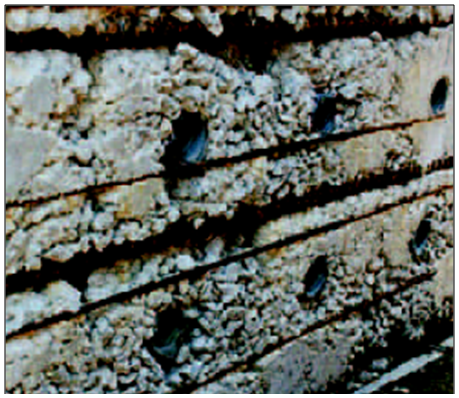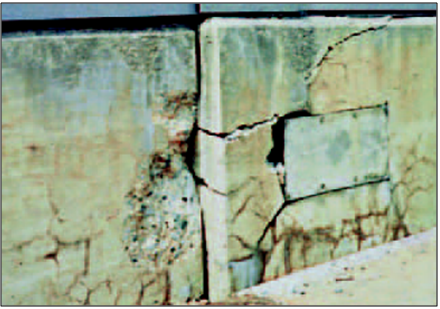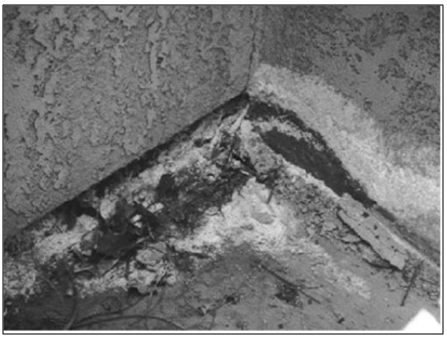-
Paper Information
- Paper Submission
-
Journal Information
- About This Journal
- Editorial Board
- Current Issue
- Archive
- Author Guidelines
- Contact Us
Journal of Safety Engineering
p-ISSN: 2325-0003 e-ISSN: 2325-0011
2019; 8(1): 1-8
doi:10.5923/j.safety.20190801.01

Safety Review of the Quality Ready-Mix Concrete (RMC) and Workmanship in the Construction Industry
Ghanim Kashwani, Engui Liu, Abdulrhman Atif
Division of Engineering, New York University Abu Dhabi
Correspondence to: Ghanim Kashwani, Division of Engineering, New York University Abu Dhabi.
| Email: |  |
Copyright © 2019 The Author(s). Published by Scientific & Academic Publishing.
This work is licensed under the Creative Commons Attribution International License (CC BY).
http://creativecommons.org/licenses/by/4.0/

Concrete crack formation is one of the main safety problems faced in the construction industry. The scope of this research is to critically review the quality and durability of the ready-mix concrete and workmanship in construction sites, which are some of the major reasons for crack formation. In accordance with the objectives, the review consists of critical analysis and study about the formation of cracks in concrete structures, how the quality of workmanship affects the cracks in concrete, investigation of the quality of concrete produced in an RMC plant and the benefits and barriers for the construction industry. Further, the review expounds the factors critical to improving the quality of concrete produced in an RMC plant as well as the factors relevant to improving workmanship while casting the concrete, which will inhibit the formation of cracks. The study ends with a discussion of the factors that can help improve the quality of the concrete, while reducing cracks at the same time.
Keywords: Safety, Quality, Ready Mix Concrete (RMC), Construction Site, Workmanship
Cite this paper: Ghanim Kashwani, Engui Liu, Abdulrhman Atif, Safety Review of the Quality Ready-Mix Concrete (RMC) and Workmanship in the Construction Industry, Journal of Safety Engineering, Vol. 8 No. 1, 2019, pp. 1-8. doi: 10.5923/j.safety.20190801.01.
Article Outline
1. Introduction
- Concrete is one of the most important construction materials used for vast infrastructure developments. Considering its availability and economy, it is almost impossible to replace concrete with other materials. However, the quantity of concrete used all over the world burdens the environment by producing CO2 in large quantities. Thus, the impact caused on the environment by the extensive daily use of concrete around the world needs to be considered and mitigated. This goal can be reached by improving the quality and environmental performance of concrete [1]. Ready mix concrete (RMC) can be described as batched plastic concrete prepared in a batching plant according to the contractor's specification, which is delivered on site at the time of casting, usually in cylindrical trucks known as “transt mixers”. RMC has been utilised extensively for two reasons –its cheap price and its liquid form enabling it to be casted in any desired shape. Concrete is weak in withstanding the tensile forces, while on the other hand it is much stronger in resisting compressive forces. From the twentieth century onwards, concrete has been utilised as a building material on a regular basis, but in 1930 when the National Ready Mixed Concrete Association was formed, only a handful of RMC plants were available to serve the market. In the early 1900s [1, 2], mixing the concrete on the site itself by purchasing bagged cement and aggregates was standard procedure. In wartime, due to the boom in industrial, government and house building construction work, demand for RMC rose exponentially. This marked the birth of the RMC industry, where more than 3000 RMC plants were installed. Over the past 30 years, the RMC industry has seen a technological shift from single-plant to multi-plant operations. In early 1916, [2, 3] Stephen Stepanian of Columbus, an Armenian immigrant from Turkey, invented the first self-discharging motorized concrete transit mixer, which was used to deliver the RMC on site. He is often referred to as the father of the RMC industry. RMC consists of sand, aggregates, water and cement with some specialized admixers, prepared in a batch plant as shown in Figure 1. The quality of the RMC depends on many factors that are discussed in detail in the literature review section.
 | Figure 1. Ready Mix Batching System Plant [3] |
2. Literature Review
- According to many scholars [7], a crack can be defined as the breaking of concrete into two or more parts, partially or fully, under the designated load. Cracks in concrete structures are very commonly sighted. The main reason behind the development of a crack is excessive increase in stress in relation to the strength of any component. The increase in stress in any component depends on various factors, such as different types of loads, viz., live load, dead load, wind load or seismic loads. Cracks can also occur due to the settlement of foundation or because of changes in the temperature of concrete, changes in moisture or due to various chemical changes taking place within the concrete. From the mid-19th century, structures were being built with concrete, although due to the poor quality of cement, development of structures using concrete did not gain speed. Over time, the increase in experimental work led to improvements in the quality of cement and development of new construction techniques leading to concrete becoming the most widely used material for construction of modern buildings [7, 8]. In recent times, the main aim of civil engineering has been to increase the life span of existing structures, given the limited resources for new development. Hence, it has become mandatory to depend or rely on the existing structures, which are ageing quickly in many countries. To achieve this aim, strict and frequent monitoring of the structures will be required, while on the other hand advanced strategies must be developed to improve and maintain the health of the structures. Cracks are one of most important sources of information in concrete structures, as they indicate the weak zones of the structure and the forces acting upon it. Cracks can be active or dormant. If they are active, some movement can be seen in the direction or width or depth within a period. Dormant cracks do not show any movement. Dormant cracks are less dangerous, but if left unattended, they can be a path for moisture to penetrate, which can be a source of structural damage in future. Hence, the quality of concrete plays a very crucial role in avoiding cracks [8]. Cracks can be broadly classified as structural cracks and non-structural cracks. The cracks which are visible in the structural elements of a building such as beam, column and foundation can be termed as structural cracks. These cracks may occur due to faultiness in the design, wrong methods of construction or ignorance during the calculation of loading. Structural cracks are dangerous, as they affect the stability, durability and safety of any structure. Non-structural cracks are visible on non-structural elements of the structure such as masonry walls, parapet walls, etc. These types of cracks can be generated due to stresses developed within the materials of the building. Non-structural cracks do not endanger the safety or durability of the building, but they harm the aesthetics of the building, giving a feeling of instability [8, 9]. On the basis of width, cracks can also be classified as thin cracks, which are less than 1mm in width, medium cracks, which are 1 to 2mm in width, and wide cracks, which are more than 2mm in width. The shape of cracks may vary or they can be of constant width throughout or they may even be wide at the start and tapering towards the end. As shown in Figure 2, cracks have different characteristics, as they occur due to different causes. Diagnosing cracks in order to adopt appropriate remedies and counter measures can only be done by keenly observing their characteristics [10].
 | Figure 2. Types of Cracks: (a) Minute Cracks, (b) Wide Cracks [10] |
3. Mechanical, Stability and Environmental Factors
3.1. Static and Cyclic Loading
- Concrete is prepared by means of mixing a cementitious paste with aggregate. Aggregate acts as a binding agent to the cementitious paste. When a load is applied to aggregate and cement paste individually, it can be seen from the Figure 3 that their response is linear. But on the other hand, when load is applied to the concrete, its response is quite non-linear. This non-linearity is the cause of micro cracks in the concrete.
 | Figure 3. Stress Strain Curve [13] |
3.2. Settlement and Shrinkage
- When freshly mixed concrete is poured, it starts to settle over a period of time and faces some restraints due to which cracks occur, which are known to be settlement cracks. Due to the gravitational force, the heavier particles in the concrete tend to settle down, until the concrete sets. Plastic settlement cracks occur due to changes in the cross-sectional area [14].Cracks caused by shrinkage can be observed at the surface of freshly poured concrete within a short period of time. During the placement of concrete, if the evaporation rate of water is more than the bleeding rate from the concrete, then it results in the dryness of the concrete surface, which in turn gives ground for developing cracks. Shrinkage cracks can occur due to high temperatures in the surroundings, high humidity, and heavy winds or due to the mixed design of the concrete. There is a high occurrence of cracks due to shrinkage in structures which have large exposed flat areas in relation to the volume of the concrete placed [15].
3.3. Thermal Contraction and Freezing Cyclic
- During the curing of concrete in its initial stages, the temperature of concrete rises due to heat of hydration of cement. The temperature of concrete is at its peak after approximately 18 hours, but this approximate time also depends on a number factors such as environment temperatures or any application curing membrane. After a while, the concrete cool in accordance with the temperature of the surroundings. This process of cooling results in cracks due to the thermal shrinkage of concrete [16].Two types of deterioration occurs due to freezing and thawing, viz., internal cracking due to repeated freezing and thawing cycles and scaling of surface due to freezing in the presence of salts. When water freezes to ice in the cracks, it causes the expansion of the concrete internally due to which aggregate or cementitious paste or both are damaged, resulting in the formation of cracks. Water travels to the already formed cracks and freezes there, which again helps in making the cracks wider. If the concrete gains sufficient strength, then it should become resistant to freezing and thawing [17, 18].
3.4. Corrosion, Alkali and Sulphate Attacks
- Steel reinforcement present in concrete is initially corrosion resistant due to the high pH available in the concrete, caused by calcium hydroxide and alkalis. Due to such high pH levels, the steel is protected against corrosion because a layer of ferric oxide is developed on the steel. Because of this layer, the corrosion of steel becomes passive. The corrosion becomes active when chloride ions starts penetrating the concrete, which lowers the pH as well. The initiation of corrosion requires three elements, namely moisture (water), oxygen and an electrolyte. As shown in Figure 4, corrosion can be more dangerous in situations where the steel is exposed to the environment. As the products of corrosion are expansive in nature, a tensile force is developed around the steel. Once the corrosion reaches its optimum level, splitting cracks are observed, which causes the loosening of the bond. Once these cracks reach the surface, they cause concrete spalling [19].
 | Figure 4. Cracking due to corrosion [11] |
 | Figure 5. Cracking Due to the Alkali Aggregate Reaction [11] |
 | Figure 6. Sulphate Attack [22] |
4. Workmanship Factors
- In some cases, cracks in concrete do not occur due to environmental factors or soil conditions but due to poor construction methods or defective workmanship. Cracks due to bad workmanship may not occur immediately, but they can prove to be dangerous after a certain age of the structure. Some workmanship mistakes that could lead to cracking of concrete are explained in the following sections.
4.1. Inadequate Footing and Expansion Joints
- Foundation plays the key role in any strong structure. In order to avoid settlement of the foundation, adequate preparation of foundation should be done so that it gives a firm and steady support to the structure. Foundation or footing of inadequate size or compacted improperly can cause the foundation to settle, which can cause cracks in the concrete [23].When a structure is constructed with concrete and bricks, the expansion joint becomes a crucial element. These are the joints which provide room for the concrete and bricks to thermally expand, which will minimise any adverse effect on the structure. If for any reason these expansion joints are not installed, it may cause cracks in the brick walls, which eventually results in loosened interlock between the aggregate and the bricks, leading to an eventual wall collapse. On the same lines, if there is a failure to install concrete expansion joints, it will result in the cracking of concrete due to thermal expansion [24].
4.2. Missing Structural Elements [24-26]
- In some cases, in basement areas, to create more usable space, the supporting columns are removed. Due to these wrong practices, additional stresses are developed on the beams, which results in cracks which also spread to the connecting elements. Steel reinforcements are provided to strengthen the concrete element against tensional forces. The elements of the structure are designed accordingly, with adequate steel reinforcement. If during construction, inadequate steel reinforcement is provided, then as a result, the element with insufficient steel reinforcement will fail to accept the designed load, leading to the formation of cracks in the elements. Control joints are essential elements in poured concrete, as they inhibit the formation of shrinkage cracks. Shrinkage cracks are of no importance from the structural point of view, but if left unattended, they can be a pathway for water to ingress causing the deterioration of the structure from the inside.
5. The Benefits of RMC in Construction Industry
- In RMC, the quality of concrete is assured as the process is already streamlined, with the concrete being produced in a computerised and controlled environment, with the quantity of cement, sand, aggregate and other admixtures already programmed [28]. This is one of the greatest advantages, which makes the construction process faster as compared to the normal, traditional concrete mix. The time taken for the full project will be reduced, which will impact the delivery time of the project, besides the saving on project cost. RMC is more cost effective and convenient for all types of projects in the construction industry. In 1930, when the National Ready Mix Concrete Association was founded in the United States, RMC was regularly used in the construction industry for rapid construction of buildings and infrastructure. By the 1940s, RMC was in high demand, as governmental buildings and highways construction was booming, leading to an increased demand for offsite concrete mixers [29].Using RMC will reduce the quantity of cement used by 10–12% compared to the traditional hand mixing method, as it helps the proper mixing of the concrete and for it to be in the plastic stage for a longer duration to be carried on site by the RMC mixers. Use of admixtures depends on the project nature, design of project or the demand of the contractor, which further helps reduce the quantity of cement, leading to cost reduction. A more effective concrete mix also helps to reduce the cracks on site after casting. The use of mineral admixtures and cementitious material will reduce the water cement ratio, which helps the proper mixing of RMC to reduce minor cracks on site, thereby reducing the overall cost of the project [28].Since RMC is a computerised, well-managed and sequential process that uses the proper quantities of ingredients according to the contractors' needs, which involves bulk quantities of cement stored in silos instead of bag cement, this helps to mitigate environmental pollution as well as reducing cement consumption, which becomes cost effective. The savings in cement will result in lesser pollution and cost and help conserve energy and resources [28]. Due to proper mixing and lesser time consumption for preparing RMC, customers are relieved and satisfied with the quick delivery of concrete on site. Considering the high demand for concrete in the industry, competition in the construction market has increased, which helps to increase the workforce and boost the economy of the country. RMC helps to reduce material wastage on site compared to the traditional method of hand mixing, thus reducing the overall cost of project [30]. As per the American Society for Testing Materials (ASTM) International, the delivery time of RMC on site should be within one and a half hours or before 300 times rotation of the RMC trucks after the mixing of water in cement in batch plant, which indicates the fast delivery of RMC on site, thus helping reduce the construction time and overall cost of the project [11]. RMC batch plants should be near the delivery sites, since the concrete should not settle down. The travelling time between the plant and the delivery site should not be over long distances, so as to protect the fresh concrete from becoming unusable due to settling over long periods. Changes in the settling of concrete can happen if the travelling time of the mixture is more than the expected time, which is one and a half hours or 300 times rotation in a concrete mixer as per the ASTM standards. So, to increase the setting time of concrete, generally plasticisers, super plasticisers or retarders are used to control the plastic limit of fresh concrete. On the other hand, use of these retarders may create problems in the placement of concrete on site, which may often decrease the strength of the concrete. Therefore, to avoid such problems on site, it is essential to check the quality of admixtures before their addition in the RMC plant [31]. An RMC mixer is quite large in size, requiring more area and leading to additional road traffic. Usually, one RMC mixer contains 6 m3 of concrete, which requires more space on road, hindering traffic in more congested areas. Some of the RMC plants use 4 m3 mini-mixture trucks to avoid traffic at more restricted sites. Some of the big projects have to provide additional access road space to the site area to avoid traffic, which can increase the overall cost of the project [32, 33].
6. Conclusions
- The aim and objectives of this study were to reduce the occurrence of cracks by improving the quality of RMC in the industry. The study aimed to analyse the crack formation in construction sites, which the researcher explained as follows: first, this study provided a background to the RMC history. It also stated the objective and methodology to be used in the research. It also explained the dissertation structure. Second, the review dealt with the crack formation discussed in the literature review and the factors that affect it as well as the advantages and disadvantages of RMC at construction sites. Furthermore, the study also investigated the current quality of RMC used in construction. The research discussed the workmanship of RMC and the reason behind the poor workmanship during construction.There were many strategies based on the literature review and research analyses. In addition to the above-mentioned points, different concrete safety researchers suggest that the following strategies can be used to improve the quality of concrete and reduce the cracking of concrete. The suggestions are as follows [34-37]:• When the RMC reaches the site, the contractor must check its workability through slump checking and measuring the temperature of the concrete in relation to the ambient temperature. Also, the design of RMC must be checked to verify that it is the same as what was proposed and required by the design. Finally, samples must be taken to check them for compressive strength after seven days and 28 days.• During concrete casting, the formwork must be clean and proper. Also, a proper vibration must be done to monitor the flow of the concrete. The concrete must be observed for initial setting. A sample can also be taken to check the quality during casting. After casting, proper and sufficient curing must be done on the structure with continuous observation for any crack formation or any Reinforced Concrete Cement (RCC) defect. Also, the sample taken must be tested for seven days and 28 days to ensure that it reaches a compressive strength of 80% and 100% respectively. Furthermore, the contractor cannot strike the formwork till the RCC reaches at least 80%. Finally, when the contractor starts to strike the formwork, he must recheck for any RCC defect and cracks to rectify it.The following points are recommended to be examined via a number of concrete safety scholars for a broader image of the subject when conducting further studies [38-41]:• Checking the raw material quality from the plant, which can give an idea of whether or not the quality of the raw material used is adequate.• Checking the RMC quality in all stages, from plant till after casting, so that the researcher can monitor the quality at all stages to check if the cracks are because of the concrete design and quality.• Checking the quality of the reinforcement of the structure and formwork to see if the cracks are caused by the design and inadequate control during the installation procedure.• Taking more tests for crack analysis, such as the coring test to precisely measure the depth and strength of the RCC structure. Also, further testing for the properties of the cracks, such as the UPV test and impact eco tests.
 Abstract
Abstract Reference
Reference Full-Text PDF
Full-Text PDF Full-text HTML
Full-text HTML